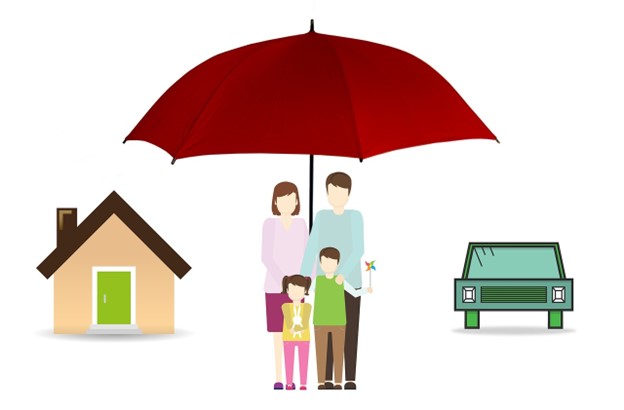A Complete Guide to The Best Life Insurance in Canada

A report by the Canadian Life and Health Insurance Association (CLHIA) found that 22 million Canadians possess life insurance, as per their 2022 report. The primary reasons Canadians purchase life insurance are to safeguard their loved ones financially and fund their children’s education and retirement plan, based on an April 2023 HelloSafe survey targeting over 950 Canadians.
If you’re without coverage, keep reading to discover what life insurance entails, the various policy options available, the cost of coverage, and tips for locating the best life insurance plans in Canada.
Understanding Life Insurance: How Does It Function?
You’re probably familiar with the basics of life insurance. In Canada, it’s an agreement between you and an insurance company. You pay regular premiums, either annually or monthly. In exchange, if certain conditions are met—typically, in the event of your death—your designated beneficiaries, such as your family, receive a predetermined sum of money.
Life insurance costs depend on various factors, such as the amount of coverage you want and your preferred type of policy. Canadians often pick a package that covers funeral costs and debts (such as car loans, credit cards, and mortgages) and replaces lost income when someone passes away. This helps support loved ones who may need time off work to grieve and also covers regular expenses without your paycheck. You can also use life insurance money to make donations to charity or pay for your kid’s college.
Let’s be clear: In most cases, life insurance isn’t for you—it’s for your dependents. Its objective is to support the people you leave behind so they can maintain their current lifestyle. This means covering future expenses, any other debts, education costs, bills, and the mortgage.
The life insurance industry lets Canadians customize their policies to fit their budget and financial goals for the future.
The life insurance industry allows Canadians to customize their policies to fit their budget and financial goals for the future.
Why should I get Life Insurance in Canada?

Not everyone needs life insurance. If you don’t have debt or dependents, then you might not need it. However, before dismissing the idea, consider the following questions:
- Are you in a serious relationship?
- Do you have anyone who depends on you? This could be your parents, children, or a partner.
- Do you owe money on a mortgage? If so, how many years until it’s paid off?
- Do you still owe money on student loans?
- Are there any debts your family might have to repay if you pass away?
- Do you wish to donate money to charity?
- Would you like the option to withdraw cash from a life insurance policy for a significant future purchase?
- Do your children have enough money saved in their Registered Education Savings Plans (RESPs) to cover their education expenses?
- Could your family manage financially without your income?
- How much money have you saved?
How Much Life Insurance Do You Need?
To determine which life insurance fits your individual situation, begin by determining the amount of coverage you require. This figure will not only impact your family’s financial security once you’re gone but also influence the cost of your coverage.
The typical Canadian life insurance policy provides coverage worth about $200,000, but experts say this might not cover all your needs. They suggest having coverage worth around 10 times your yearly income. However, the perfect amount depends on your family and lifestyle.
Here’s an easy way to estimate the amount of insurance you need: the DIME method. It considers your education expenses, mortgage, income, and debt.
A closer look at what you own (assets) and what you owe (liabilities) can give you a better understanding of your finances and what you’ll leave for your dependents. By determining the difference between what you own and owe, you can decide if life insurance is necessary and how much coverage to get.
When listing your assets, think about adding (if applicable):
- Non-registered investments (real estate, segregated funds, stocks, ETFs, mutual funds)
- The value of your vehicle(s), home, and maintenance (resale value)
- Your registered investments (FHSA, RESP, TFSA, RRSP)
- The balance in your savings account(s)
In your liabilities list, take into account the following, including (if applicable):
- Estate settlement and funeral costs
- Credit card and lines of credit debt
- Car loan(s)
- Your mortgage balance
What Are The Different Types of Life Insurance?
In Canada, life insurance generally falls into two main categories: term and permanent. Under these categories, there are various types of insurance policies available:
- Term life insurance is bought for a specific period, such as 10, 20, or 30 years. It’s usually less expensive than permanent life insurance for many people.
- Term 100 life insurance provides coverage until you turn 100. It offers lifelong protection with a steady premium (until you’re 100, then you stop paying premiums), making it a permanent policy. However, unlike whole life or universal life plans, term 100 life insurance doesn’t accumulate cash value.
- Whole life insurance is a popular type of permanent life insurance that doesn’t have an expiration date. As the name suggests, it provides coverage for your entire life. Whole policies build up a cash value that grows over time.
- Universal life insurance, another type of permanent life insurance, features an investment account that lets policyholders invest and build wealth without immediate taxes. Depending on investment performance, policyholders might temporarily reduce their premiums.
These policies have several distinctions. For instance, with whole-life insurance, you can finish paying premiums early and stay covered. However, with term insurance, once you stop paying, the coverage ends. Also, you might be able to cash out a whole life insurance policy, which isn’t possible with term insurance.
You can also read about life insurance for kids in Canada.
What is The Cost of Life Insurance in Canada?
Life insurance rates differ significantly. Monthly premiums can start as low as $17 and go up to over $300. Why such a big difference? It’s because rates depend on what coverage you need and how you live. Everyone’s needs are unique, so no two people pay the same.
Before you request a quote online or talk to a broker, it’s smart to know your assets and debts, which will show what you’ll leave for your family. Also, think about what kind of life insurance you want and consider your health, lifestyle, and age. These factors can help you guess if you’ll pay more or less for insurance.
Life Insurance Add-Ons: Options and Riders to Think About
While it might seem like a sales pitch, customizing your life insurance policy with “extras” can benefit you.
If you’re seeking a family plan, it’s crucial to understand that this policy is essentially a fundamental insurance package with adjustments and riders, like a child rider. Since it’s already made up of various insurance components, it’s wise to tailor it to your needs.
You may be self-employed, or the benefits provided by your employer aren’t sufficient. Whether you’re footing the bill or your employer is, make sure your policy includes short-term and/or long-term disability insurance. If you didn’t inquire about it when you signed your employment contract, it’s not too late to check with the HR department. Critical illness coverage is another option to consider. It provides a lump sum payment if you’re diagnosed with a severe condition like paralysis, multiple sclerosis, or cancer.
Finding The Best Life Insurance in Canada
Before purchasing life insurance, you should prepare a few things. Besides deciding on the type of policy you want (permanent or term) and if you need extra coverage or riders (like for critical illness, disability, or children), consider how much you can afford to pay for monthly or yearly premiums. Also, clearly understand how much money you want to leave for your family, loved ones, or a charity you care about. Being prepared will help you answer questions when requesting an insurance quote. You’ll also be asked about your health, such as whether you smoke, have certain medical conditions or have a family history of illness.
Whether you use an insurance broker, an online broker, or go directly to an insurance provider, you’ll receive various quotes to consider.
When you’re ready to apply, you’ll need to provide evidence of the following:
- Your lease, mortgage bill, property tax statement, or a letter from your landlord to confirm your address
- Your pay stubs or a letter of employment can be used to verify your income
- Your passport, birth certificate, Social Insurance Number, or driver’s license can be used to verify your identity.
You’ll also need to arrange automatic premium payment. You’ll receive a life insurance policy detailing your agreement and projections for the policy’s value. You can ask for digital and paper copies for your records.
Is life insurance taxable?
You designate your loved ones (or even a charity) as beneficiaries to provide them with financial support, so it’s natural to want to know if the money they receive from your policy will have tax implications. Fortunately, most money from a life insurance policy isn’t taxable. However, some fees, such as estate planning and probate fees, are subject to taxes.
When is the Right Time to Get Life Insurance?
For many Canadians, the answer might be “as soon as possible.” If you have dependents whose lives would be affected if something happened to you, it’s worth considering life insurance. Many people think about timing life insurance in terms of getting it before any health issues arise. There’s something to be said for that—higher risk often means higher premiums—but the primary goal of life insurance is to protect your loved ones from financial difficulties after you’re gone.
Benefits of Shopping for Life Insurance Online
You might consider getting life insurance from your bank or mortgage provider. Still, it’s wise to explore other options for the best rates. Shopping online for life insurance lets you compare products and rates quickly. You can take it further by using an “aggregator” site, which gathers rates from different providers like a broker would. Depending on the website, the process can be straightforward.
Is Life Insurance Necessary if I Already Have Mortgage Insurance from My Bank?
Mortgage life insurance guarantees that you and your dependents can settle your mortgage if you pass away. It’s a type of life insurance, and the lender receives the policy’s benefits. However, it’s distinct from mortgage insurance (also known as mortgage default insurance), which safeguards your lender if you can’t make your mortgage payments.
Is a Health Exam Necessary to Obtain Life Insurance?
The decision is yours to make. In Canada, you can get life insurance without undergoing a medical exam. However, these policies may be more expensive than those requiring one. Nonetheless, it’s worth inquiring about. You may discover that the medical exam is less extensive than you expect.
Kyla Lovell is a financial expert that teaches the Infinite Banking concept utilizing whole life insurance. This concept creates financial wealth by creating your own personal bank. Get your free Infinite Banking report for more information on the concept.
Quick Contact